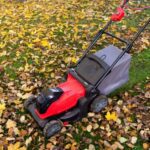Because riding lawn mowers cut down on time spent mowing their lush, well-kept lawns, many homeowners with larger lots choose to use them. While looking for serious areas of strength for such, mortgage holders ought to remember their weight. The unwieldiness of moving and putting away a riding yard cutter is only one of the many adverse consequences of its weighty plan on its usefulness and spryness.
From the definition to the manners by which it impacts your gear determination for grass care, this article covers what you want to be aware of riding yard cutter weight. Let’s read below about “How Much Does a Riding Lawn Mower Weigh?”.
Table of Contents
Understanding the Basics
Allow me to separate the rudiments of what compels riding yard cutters so weighty before we get into the particular loads of these gear.
- Engine Size: The size of the motor is a main consideration in the general load of riding grass trimmers. Trimming greater yards and additional difficult landscapes is simpler with bigger motors, which are more grounded and heavier and have more torque (HP).
- Cutting Deck: Models vary in the elements of the cutting deck, which houses the grass-cutting sharp edges. Trimmers with more extensive cutting decks are frequently heavier because of the expanded material and underlying scaffolding necessities.
- Frame and Chassis: A riding lawnmower’s casing and suspension decide how steady and long it will endure. Steel and aluminum are two materials that have an effect on the total weight. Highlights like a roll confine and an incorporated stowing framework can raise the cutter’s weight.
- Fuel Capacity: The size of the riding lawn mower’s fuel tank makes it weigh more overall. Bigger tanks take into account longer lengths of activity between tops off, yet they are heavier.
- Transmission Type: Hydrostatic, programmed, and manual gearboxes are only a couple of the choices accessible for riding grass cutters. Contingent upon the gearbox type influences both generally speaking weight and administrator weariness level.
Common Weight Ranges
There are a great deal of variables that impact the heaviness of riding grass trimmers, including brand, model, and specs. While residential models typically weigh between 350 and 600 pounds, commercial riding mowers can weigh over 1,000 pounds.
- Compact and Light Models: Lighter and more reduced are the qualities of more modest riding grass trimmers intended for property holders with more modest yards. They are more straightforward to deal with and store in a carport or shed on the grounds that to their decreased weight (300-500 pounds).
- Mid-Size Models: Bigger private properties are best cut by riding trimmers gauging 500 to 800 pounds. These trimmers’ fair power and mobility make short work cutting yards of shifted sizes.
- Heavy-Duty and Commercial Models: A hard core riding cutter, gauging 800 to 1,500 pounds, is vital for business use or on extremely huge homes. The strong motors, enormous cutting decks, and sturdy parts of these machines permit them to handle intense cutting tasks.
Factors Influencing Weight Preferences
A singular’s inclinations and requirements will direct the ideal client weight for a riding lawnmower. A few contemplations to remember are:
- Lawn Size and Terrain: Your yard’s size and geology ought to be your essential contemplations while picking a riding trimmer’s weight. For more modest, compliment yards, a lightweight trimmer could be adequate. In any case, for bigger or more lopsided landscapes, a heavier and more steady machine might be required.
- Storage and Maneuverability: For mortgage holders with restricted extra room or yards with sharp corners that need fragile cutting, the capacity limit and mobility of riding trimmers are vital variables to consider. As a rule, that weigh less are more helpful to store and migrate in restricted spaces.
- Transportation: While moving your riding cutter starting with one area then onto the next, be it for support or capacity, you ought to remember its weight. Moving a few models without particular gear or assistance could be troublesome.
- Operator Strength and Comfort: Other significant highlights of a riding trimmer are its strength and the administrator’s solace. Those with less strength might decide to go with a more modest, lighter model, despite the fact that most current trimmers are not difficult to hold.
Impact of Weight on Performance
A riding grass trimmer’s exhibition is enormously influenced by its weight. To settle on an informed choice, you should know about what weight means for the activity of various cutter parts.
- Traction and Stability: While riding on slopes or other lopsided territory, a heavier riding trimmer will give more grasp and soundness. With this, you can safely and fully control your mower.
- Cutting Quality: Trimmers experience difficulty keeping a consistent cutting level when they are weighty. Which influences the nature of the cut, especially over landscape that is lopsided or rough. A lawn that appears more level and well-maintained is made possible by a heavier mower’s reduced tendency to bounce.
- Fuel Efficiency: While heavier cutters with bigger motors might consume more gas. The compromise is in many cases less functional shortcoming. The upgraded mass can possibly improve ground contact, prompting less slippage and enhanced efficiency.
- Durability and Longevity: The heaviness of a riding yard cutter is a central point in its primary strength. The drawn out worth and sturdiness of a model is best estimated by its weight and the materials used to develop it.
Considerations for Residential Users
A few contemplations ought to be made by mortgage holders while looking for a riding cutter for private use.
- Lawn Size: Take an estimation of your grass to decide the ideal cutting width and motor power. For bigger yards, a heavier trimmer might be expected, while a more modest one could be adequate.
- Storage Space: Assess the capacity limit of your ongoing structure, be it a carport or a shed. In the event that you are restricted on space, a riding trimmer that is more modest and lighter may be a superior fit.
- Terrain Characteristics: Think about the geology of your grass, including any slopes or valleys. Since they are more steady over lopsided surfaces, heavier trimmers make the cutting system more proficient and less shaking.
- Budget Constraints: Conveying a heavier form as a rule implies more highlights and capacities. However it can likewise mean more cash. To strike a balance between price and performance, establish a spending limit and prioritize features.
Maintenance and Care Tips
No matter what the heaviness of your riding yard cutter, appropriate support is vital to expanding its life and guaranteeing it proceeds true to form. Riding cutters are interesting and need specific upkeep; in this way, the accompanying guidance:
- Regular Cleaning: After each utilization, clean your cutter by eliminating any grass clippings, soil, or garbage. This forestalls amassing, which frustrates execution and could cause rust or erosion.
- Check and Replace Blades: Supplant the cutting edges on a case by case basis after consistently taking a look at them for wear and sharpness. At the point when trimmer sharp edges are dull. The motor needs to work more, and the cut isn’t uniform 100% of the time.
- Engine Maintenance: Continuously Allude to the Proprietor’s Manual for Subtleties On the best way to Change the Oil, Supplant the Air Channel, and Assess the Flash Attachments. Your motor will endure longer and perform better assuming you keep up with it appropriately.
- Tire Maintenance: Consistently checking and changing the tire pressure is fundamental for keeping up with ideal footing and an evenhanded circulation of your vehicle’s weight. Lopsided tire pressure influences the stablity and nature of the cutter’s cuts.
- Storage Practices: Cover it and keep it in a dry, concealed region. To shield your cutter from the components, cover it if possible.
Conclusion
How Much Does a Riding Lawn Mower Weigh

You ought to think about the heaviness of your riding trimmer on the off chance that you wish to keep a lovely yard without venturing into the red. If you have any desire to get a cutter that works for yourself and doesn’t burn through every last dollar. You really want to realize what goes into making it weighty and what it means for execution.
Figuring out the perfect balance between weight, power, and highlights is key for taking advantage of your grass cutter. Regardless of how huge or little your yard is. As innovation keeps on advancing at a fast speed, riding trimmers are supposed to turn out to be much further developed and versatile. More choices will before long be accessible to property holders because of impending developments from makers. I hope you like reading “How Much Does a Riding Lawn Mower Weigh?”.

Barry, the expert behind LawnInspection.com, holds a Master’s degree in Horticulture and brings over 20+ years of hands-on experience in landscaping and lawn care. With certifications in sustainable lawn management, Barry is dedicated to providing readers with authoritative insights and practical tips for maintaining lush, healthy lawns. His extensive knowledge and commitment to excellence ensure that every piece of advice on LawnInspection.com helps transform your lawn into a green oasis with proven, eco-friendly practices. Connect with Barry on social media: Instagram and Facebook.











